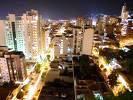Bucaramanga, Santander, Colombia
Suggest Place to Visit
2444
Track to location with GPS |
 |
The indigenous people who inhabited the region before the Conquest of America by the Spanish were the Guanes. Their domains bordered on the West with that of the Yariguíes, on the north with that of the Chitareros, on the East with that of the Laches, and on the South and Southeast with that of the Muiscas. These limits were defined by the West by the path taken by the Cordillera or Serranía de los Yariguíes, continuing through the upper Zapatoca, a part of the Gold River to the point where the Suratá River empties. Between this river and the Umpalá river at the height of the Páramo de Santa Bárbara, the Guane territory was limited to the North and Northeast with that of the Chitareros. Going down the Umpalá River to its mouth of the Chicamocha River and returning through it to its point of coincidence with the Coordillera de Guantiva, the limit with the Laches territories is demarcated. The continuity of the Guantiva mountain range to the Páramo de La Russia defines the Southeast border with the Muisca country, and continues from the South to the West by part of the Tolotá River and the Lenguaruco River, which flows into the Suárez River.
Chief Guanentá was one of the five sovereigns who ruled the Chibcha people. Its seat of government was located in the Guane people in the Jéridas Plateau and the chiefs of Uyamata, Sancoteo, Caraota, Cotisco, Siscota, Cacher, Xuaguete, Bocore, Butaregua, Macaregua, Chalalá, Poima and Poasaque were subject to its jurisdiction.
Among the penalties imposed by the Guanes were those of tying the defendant to a stick and arrowing the accused for repeating theft, and the archers who succeeded in wounding him in the mouth or in the eye were given a blanket by the chief. Mischievous young men were put chili water in their eyes, and a woman suspected of adultery was drunk with drunken juice, and if in the state of drunkenness any act of sensuality was allowed, they took the suspicion for certain, and killed her .
They grew Cotton, Pineapples and Corn. They were skilled craftsmen and made great works with cotton threads that they made.
The Guanes created their own weapons, including arrows and bows. They exchanged blankets for salt with the Muiscas of the Sabana de Bogotá and pottery with the indigenous people called Chitareros, from the western department of Santander, on the Magdalena River. From the results of the scan and radiographic study carried out eight years ago on two Guanes mummies found in the Mesa de los Santos, the old theory that the Guanes had a "Caucasoid appearance" has been confirmed. According to a study carried out, it has also confirmed that the human remains found date back to 600 AD. C., according to the data provided by the Groningen Carbon-14 Laboratorium in the Netherlands. The object of the study was two Guanes mummies that are currently part of the collections of the ´´Casa de Bolívar´´ museum.
According to data from the same research, the male guanes measured 1.63 cm on average and the women 1.51 cm. It was also known that the blood group of this town was O, the report was obtained from 100 g of skin from the remains found in the Purnia cave.
Colonial period
Bucaramanga was Established as an indigenous town attached to the jurisdiction of Pamplona. It is important to note that, as an indigenous town designated as reserve lands, on December 22, 1622 by the priest Miguel Trujillo and by Captain Andrés Páez de Sotomayor, following the dispositions of the auditor Juan de Villabona Zubiaurre, visitor of the province of Pamplona. This indigenous settlement in the Bucaramanga plateau and in the basins of the Oro and Frío rivers was subsequent to the Spanish Conquest. Due to the need that the conquerors had for the exploitation of the gold floods.
By 1799 its population amounted to 568 people, this population was extinct by the visitor Francisco Antonio Moreno y Escandón, and in its place was created in 1779 the parish of Chiquinquirá and San Laureano del Real de Minas de Bucaramanga. In 1824 the new republican government granted it the rank of town of Bucaramanga, head of the canton of its name, in the province of Pamplona.
Forty-three years later, it was provisionally designated as the capital of the federal state of Santander, which led to growth and, in turn, the acquisition of importance at the regional level.The development since then has been such that it disputes with Cartagena de Indias the fifth place in importance among the different cities of Colombia. Among the most representative buildings given their age, we find the Parish of Nuestra Señora de Chiquinquirá and San Laureano Del Real de Minas de Bucaramanga, named by the inhabitants in 1772, in the same place where the ´´Real de Minas was located de Bucaramanga´´, since by 1622 this territory was manipulated by the people of Indians for the exploitation of gold.
At one time it became the seat of the Mayor's Office of the neighboring Royals of Mines, but when the gold began to decline it gradually became a town of Creoles and mestizos, evicting the indigenous population in a high percentage. The mining occupation carried out on the banks of the Río de Oro was dispersed to the point of disappearing, although its inhabitants continued to enjoy the economic facilities provided by the King of Spain to the peoples that paid taxes with gold -when, on the contrary, they worked in various agricultural activities-, that it meant a scam to the Crown of Spain because they were neither Indians nor miners.
The situation was denounced by the council of the city of San Juan de Girón before the Royal Court -who had always had claims about the territories of Bucaramanga-, thus specifying to confer on it the character of an Independent Parish. The few Indians who still remained in the town of Bucaramanga were relocated to the town of Guane. Proceeding to auction off the lands reserved for indigenous reservations, a matter settled in 1795 during the administration of the second mayor of the town, Mr. Lim Pérez J. Medina.
No knowledge is assumed about the meaning of the term ´´Bucaramanga´´, although it is conjectured that an indigenous root is based, of which no details are known, this due to the fact that no substantial linguistic studies have been carried out about the original inhabitants of the region in question. In any case, that is the way in which the territory has been designated; In 1772 the town endured a ´´second foundation´´, a fact corroborated four years after the political independence of Spain had been given in 1823, a decree was exceeded that ruled to confer the character of ´´Villa´´ to all the old parishes , renamed the city with the designation ´´Villa de Bucaramanga´´.
Around 1857, the Villa de Bucaramanga is distinguished as the capital of the Sovereign State of Santander.
The name of Bucaramanga, like those of "Bucarica" and "Bucarasica", comes from the language of the indigenous people called chitareros by the Spanish soldiers who conquered their territory in 1549. In 1552, Álvaro de Villanueva found gold in the sands of the Rio del Río Oro, causing the sending of crews of chitareros Indians from the Guaca parcels to wash the gold sands of that river. One of those gangs was called Bucaramanga, probably because that word designated the chief who sent them to comply with the tax obligations of the encomienda. The Indians of the Cacique Bucarica gang were sent to build the hacienda of Captain Juan de Velasco, origin of the current site of the same name. As no doctrinal friar wrote a vocabulary of the Chitarera language, it is very difficult to know the original etymology of the word Bucaramanga but in some versions it is believed that its name derives from ´´Bucar´´ which means Lord and ´´Amanga´´ which means room or herd. They are common nicknames of Bucaramanga City of parks due to the number of parks that are in the city and the beautiful city that was put by the journalist Yamid Amat.
Bucaramanga is the capital of the department of Santander. It is located in the northeast of the country on the Eastern mountain range, a branch of the Andes mountain range, on the banks of the Río de Oro. Its population amounts to 716,512 inhabitants, however with the metropolitan municipalities this figure grows considerably. It is 384 km from Bogotá, the capital of the country. Because it is the capital of the department of Santander, Bucaramanga houses the headquarters of the Government of Santander, the Departmental Assembly, the sectional headquarters of the Prosecutor's Office and the Metropolitan Area of Bucaramanga.
It is connected by roads with the main cities of the country by road with Bogotá, Medellín, Cúcuta and the Atlantic Coast of Colombia. For air transport, the city has the Palonegro International Airport.
It is surrounded by the municipalities of Girón, Floridablanca and Piedecuesta with which the Metropolitan Area of Bucaramanga is made up and whose population amounts to 1,255,331.
Its economy revolves around the manufacture of shoes and similar accessories. Through a study by ACOLJOYAS (Colombian Association of Jewelers and Related Activities), it showed that 70% of the jewelery activity in Colombia is located in the city. Currently, Bucaramanga has the lowest unemployment rate in the country, which in December 2009 was 8.7%. Its main house of public order studies is the Industrial University of Santander. It is known by the nicknames "beautiful city", "city of parks", "cordial city".
Bucaramanga is a purely commercial city, although there are other economic lines that are very important such as the footwear industry that has an important market at national and international level in countries such as Argentina, Brazil, Canada, Ecuador, Italy, some Caribbean islands, United States, Peru, Venezuela and Mexico. And clothing, as well as the provision of health services, finance and, to a high degree, education, to the point that it is worth saying that the City is shaping up for the 21st century as the Technopolis of Los Andes; Proof of this is the growing number of technological research centers on various topics such as energy, gas, oil, corrosion, asphalt, leather, and agro-industrial development tools, among others. A significant sector of the Bumanguesa economy is agriculture, whose main activities: agriculture, livestock and poultry are carried out in areas surrounding the departments of Santander and Cesar, but their administration and marketing are developed here, in the City.
The city has the Chimitá Industrial Zone located to the west of the city near the municipality of Girón, there are a number of companies of different specialties such as Terpel. Also in the city is one of the main plants of the Bavaria Brewery. In addition, the city is planning the construction of the Santander Free Zone, which will be located within the metropolitan area of Bucaramanga.
The 2005 census carried out by DANE presents the following figures: 16.5% of the establishments are dedicated to the industry; 52.1% are dedicated to commerce; 29.8% are dedicated to services and 1.6% are dedicated to another activity. 3.7% of households in Bucaramanga have economic activity in their homes. In establishments that have between 0 and 10 jobs, Commerce 54.4% is the most frequent activity. And in establishments with between 10 and 50 people, the main activity is Services (41.7%). Regarding the rural sector of the city, DANE figures showed that 75.9% of occupied rural dwellings, with people present on the day of the census, had agricultural activity. Of these dwellings, and which had agricultural activity, DANE found that 70.1% were dedicated to Agricultural work, 94.1% to livestock work, and the remaining 5.6 to fish farming, 5.6%. These data are presented because most of the houses simultaneously have 2 or 3 types of activities.
Thanks to the commercial and business development that it has been having, Bucaramanga has positioned itself as a city of congresses and events by having infrastructures such as the Fairs and Exhibitions Center - CENFER, which has become the largest commercial showcase in eastern Colombia, since An infinity of fairs and exhibitions are held there annually in all branches of national commerce. The City also has a multi-functional center for events and shows, which provides Bucaramanga with a suitable space for holding large shows and recreational, sports or commercial activities. Countless conference and congress rooms allow Bucaramanga to hold conventions with the security of the most adequate logistics, execution, convenience and comfort of the service offered by Bucaramanga to businessmen from all over the country.
The specialized fairs, in addition to generating direct benefits to the respective sector, mark other lines of the economy such as transport, hotels, restaurants, commerce and various activities of service to exhibitors such as advertising, design and decoration of stands, modeling, etc.
In this city one of the most important export-oriented fairs in the region takes place: the EIMI International Children's Fashion Exhibition, the only one specialized in this subject in Latin America and to which Bucaramanga owes the name of ´´capital de la moda infantil´ ´. It is carried out in Cenfer and is the engine of exports of the apparel sector in the region, generating 40% of the foreign sales of this industry.
Culture in Bucaramanga has various expressions, from the plastic arts such as painting, sculpture, photography, and recently also in manifestation with proposals that incorporate new technologies for artistic communication, such as video. In Bucaramanga throughout its history it has hosted various cultural proposals in various areas, so there are artistic groups in the city.
One of the main pillars of culture in Santander and in Bucaramanga as a cultural center was literature, in past times there was a cultural movement around literature that produced a good number of writers who accounted for the remarkable interest of the community in literature
In 1995, the administration of Mayor Luis Fernando Cote Peña made the decision to convert the Gabriel Turbay Public Library into the headquarters of the recently created Municipal Institute of Culture, attributing the role to the construction of the Gabriel Turbay library as an operational space for the administration of the institute, which has meant the displacement of areas of the library for use by the administrative area of the municipal institute of Culture. The creation of the municipal institute of culture was conceived in order to expand the possibilities of sponsoring culture in the metropolitan area of the city. However, as culture has traditionally not played a leading role in local administrations, the institutes do not receive sufficient funds and incentives to fulfill their purposes for which they were created and carry out their work as the budget allows.
This Institute provides library services, artistic workshops, presentation of a varied range of shows and cultural work with the different neighborhoods of the city, likewise sponsors cultural activities carried out with private initiative and has a cultural station (Emisora Cultural Luis Carlos Galán Sarmiento) on the dial 100.7 FM
Festivals
Festival Iberoamericano de Cuenteros Abrapalabra, festival of storytellers and comedians organized by the Corporación Festival de Cuenteros that has been held in the city since 1992.
International Piano Festival, a piano festival organized by the Industrial University of Santander where international, national and local artists participate. It has been held since 1984 and is considered the most important cultural meeting in eastern Colombia.
Bucaramanga Book Fair ULibro, Bucaramanga book festival organized by the Autonomous University of Bucaramanga. Its cultural and academic programming constitutes the axis of the Fair and offers special attractions for the general public, the family, the university community and the educational community of elementary school and middle school. It includes conferences, meetings with authors, artistic presentations, film and literature series, poetry, workshops for children and young people, competitions, among other activities.
Bucaramanga Fair, an event that takes place every year in the month of September and that among its programming has sporting, cultural and musical events where important artists of various musical genres are presented. The events are held in various parts of the city and among its most outstanding events is the rumba at 27 where 3 platforms are set up in the city's 27th race and more than 60,000 people attend.
Comments
We don´t have yet any comments about:
Bucaramanga
Bucaramanga
Be the first to leave a comment as it is very important to inform other people
Outros locais a visitar
Within a radius of 20 km from:Bucaramanga
Casa da Cultura Custodio García Rovira |
| 0,5 Km |
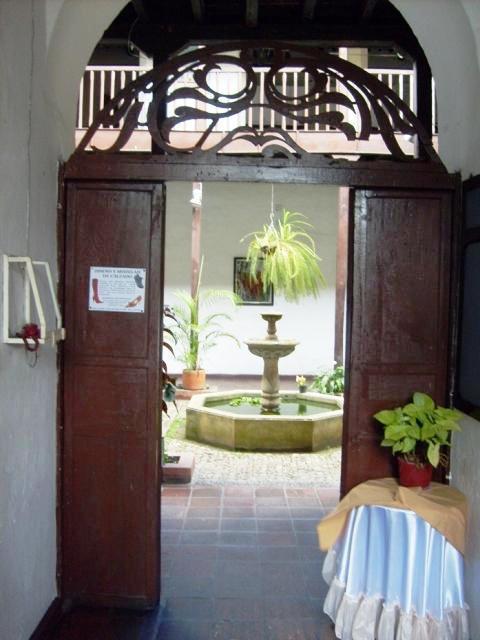 |
Casa de Bolívar de la Academia de Historia de Santander |
| 0,5 Km |
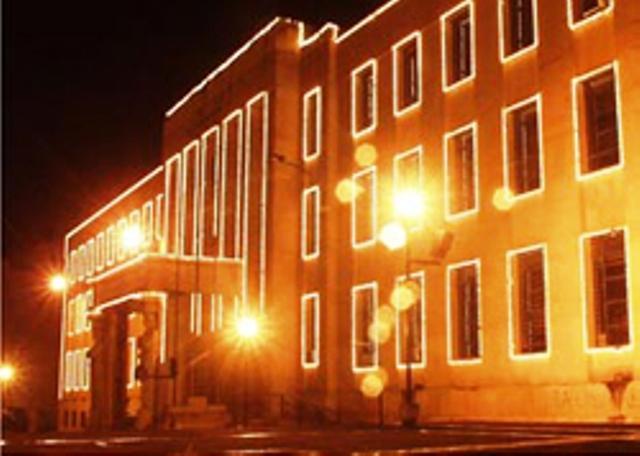 |
Museo Francisco de Paula Santander |
| 0,6 Km |
 |
Museo de Arte Moderno de Bucaramanga |
| 1,2 Km |
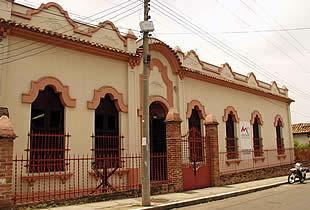 |
Museo Nacional del Tiple |
| 1,5 Km |
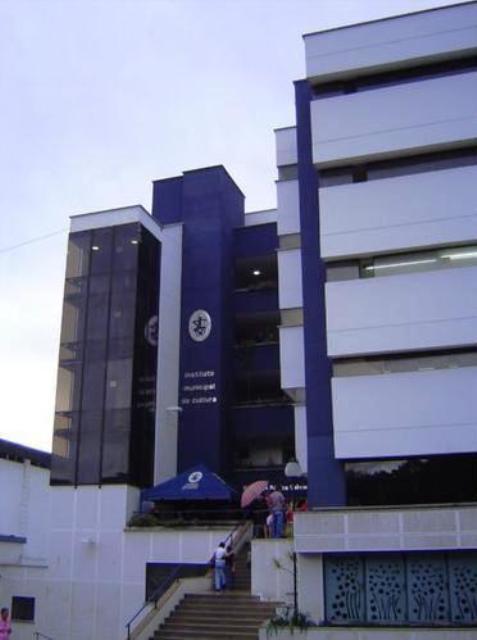 |
Floridablanca |
| 6,9 Km |
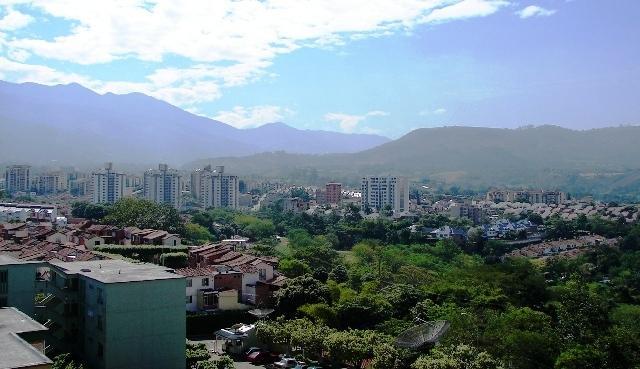 |
Casa da Cultura |
| 7,0 Km |
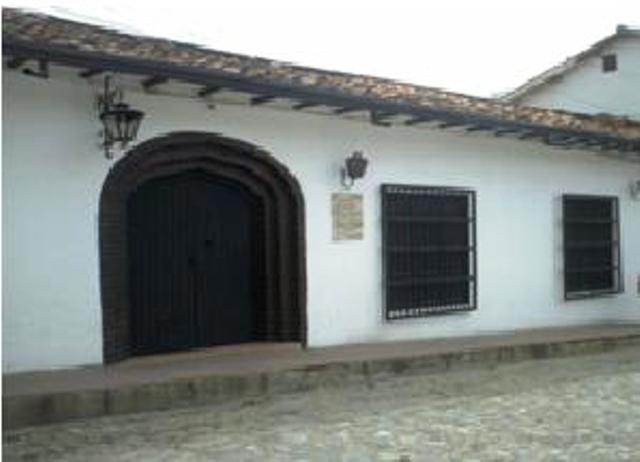 |
Câmara Municipal e Casa do Governo |
| 7,0 Km |
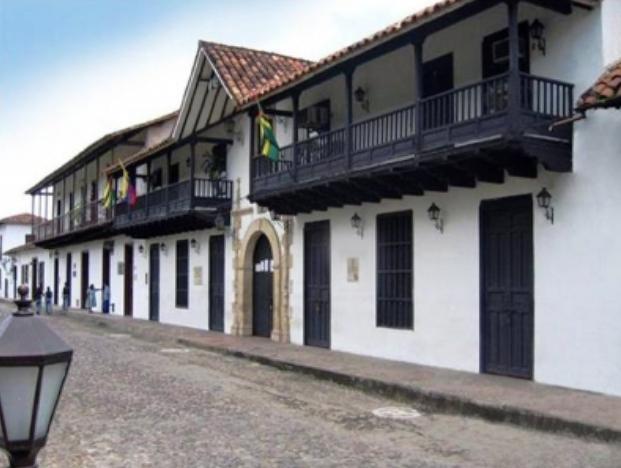 |
Capela do Senhor dos Milagres |
| 7,1 Km |
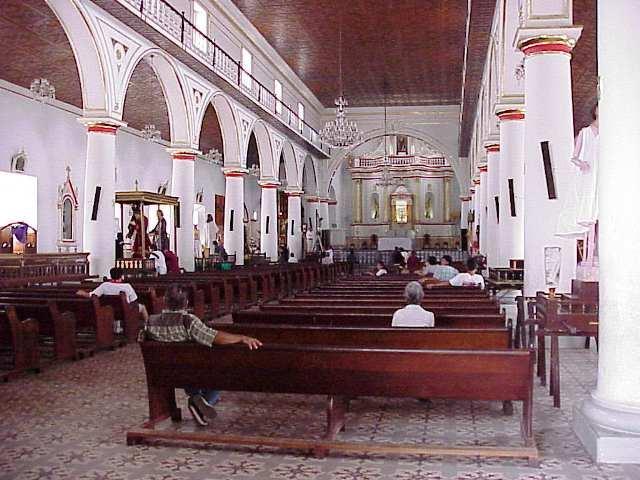 |
Museu da Mansão Frayle |
| 7,1 Km |
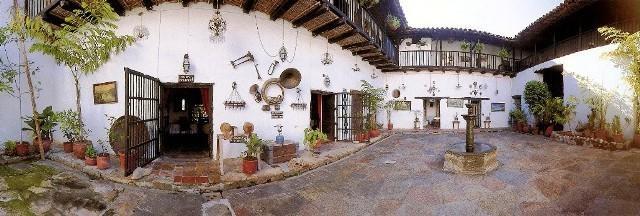 |
Girón |
| 7,1 Km |
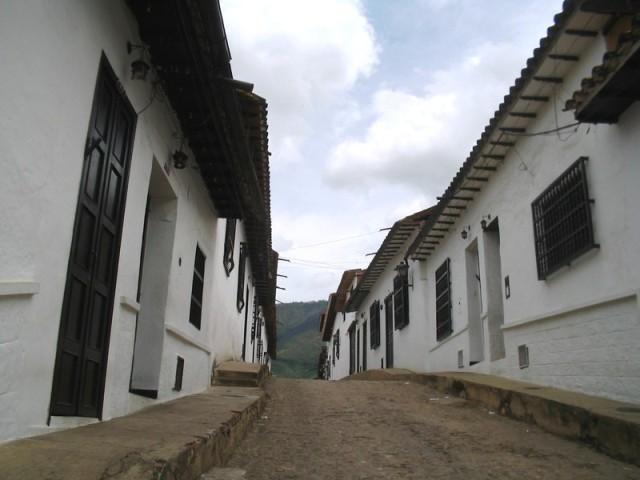 |
Peralta Park o Parque dos Amantes |
| 7,1 Km |
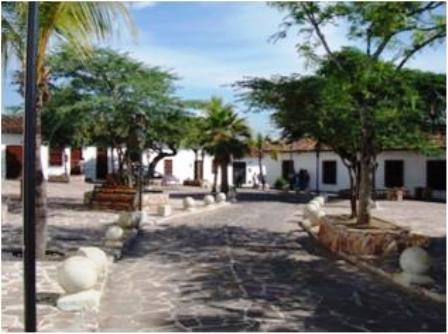 |
The Snow Park |
| 7,3 Km |
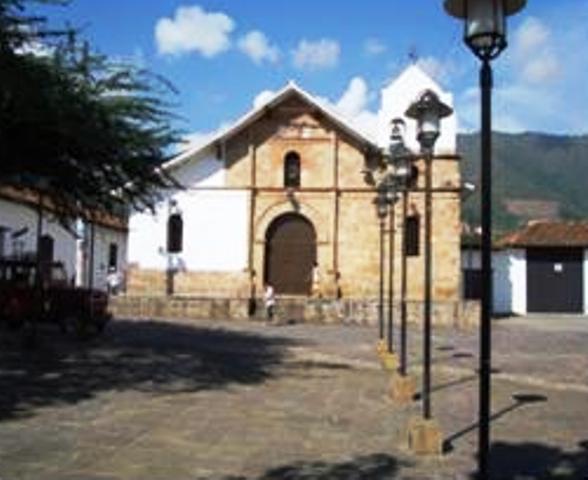 |
Lebrija |
| 10,0 Km |
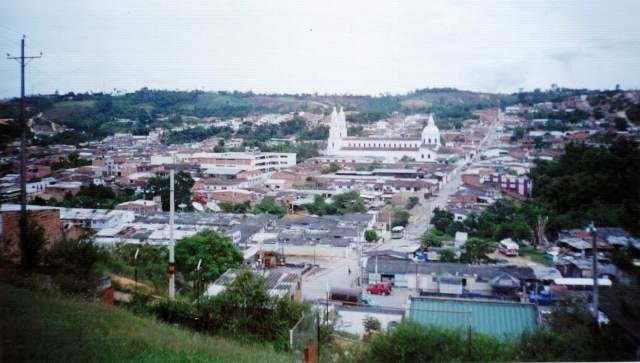 |
cidade pé da colina |
| 16,6 Km |
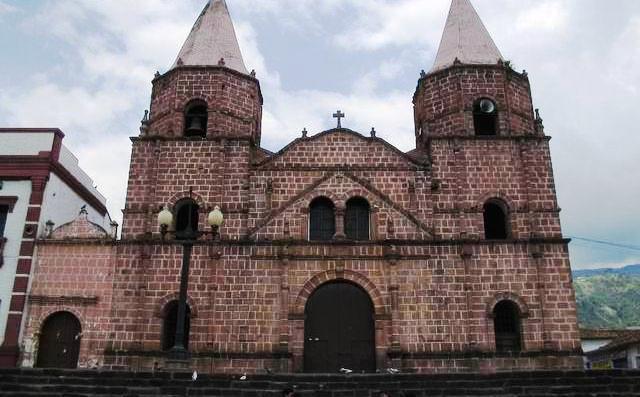 |
Hotel reservation near Bucaramanga within a radius of 20 km
Why to book with ROTAS TURISTICAS
The best prices
Our partnerships with the world´s largest operators offer research on the best market prices.
More options
At Rotas Turisticos you can book the hotel, buy the air ticket, book the transfer from the airport to the hotel and vice versa, book the local excursions, rent the car, take travel insurance and consult the places to visit and where to go.
Holiday Tips & Destinations
Hundreds of holiday destinations with all the options that allow you to easily choose the destination that best suits your dream vacation.
ROTAS TURISTICAS
Links


